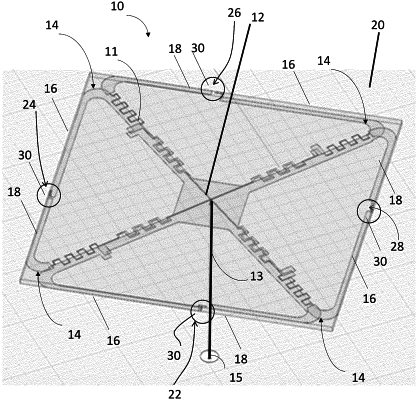| CPC H01Q 3/24 (2013.01) [H01Q 1/007 (2013.01); H01Q 1/2291 (2013.01); H01Q 9/065 (2013.01); H01Q 21/205 (2013.01); H01Q 21/24 (2013.01); H01Q 21/28 (2013.01)] | 19 Claims |

|
1. An antenna device comprising:
a plurality of dipole antennas arranged around and connected to a port, wherein the plurality of dipole antennas is arranged in a plurality of pairs, each pair comprising a first end of one of the plurality of dipole antennas and a second end of another one of the plurality of dipole antennas, the first end and the second end in proximity with each other to form each pair; and
one or more switches configured to switch between an omnidirectional state and a directional state, wherein respective ends of the plurality of dipole antennas are not in connection with each other in the omnidirectional state, and wherein ends of each of the one or more of the plurality of pairs are in connection with each other in the directional state.
|